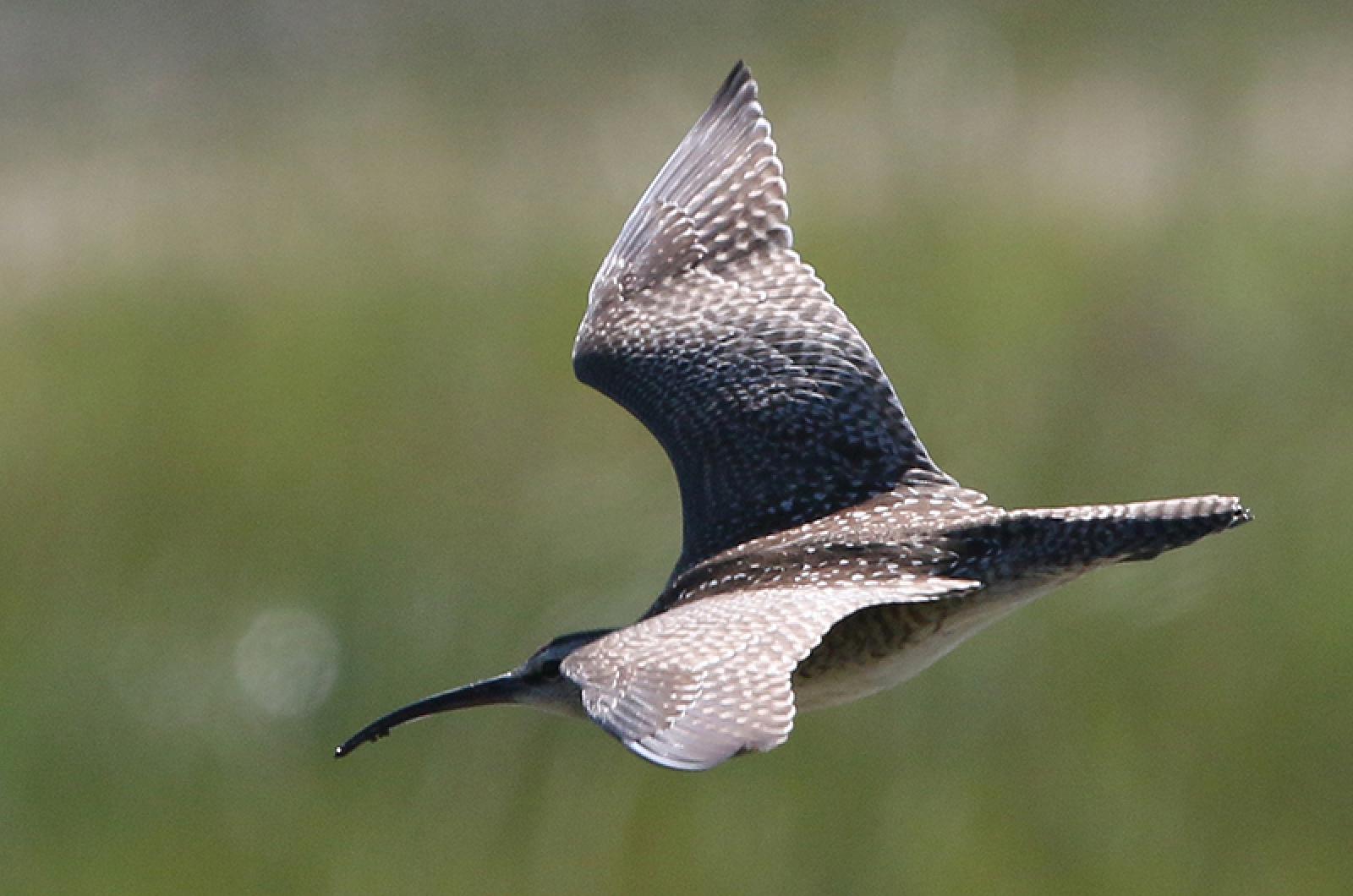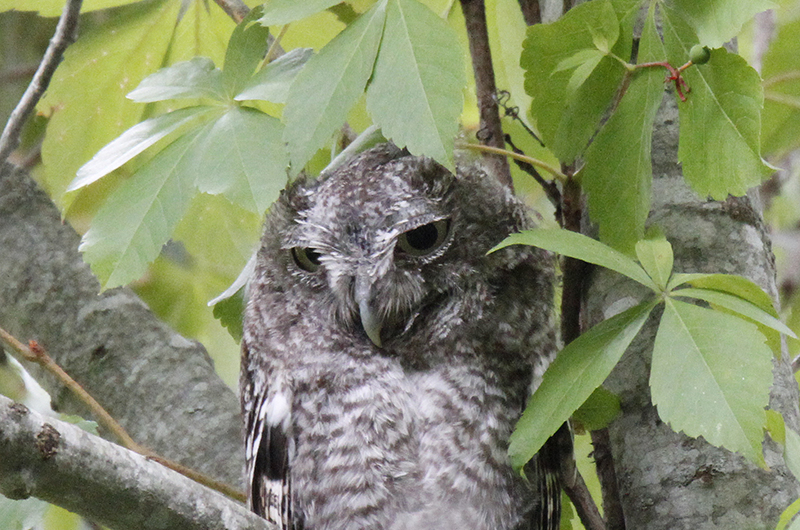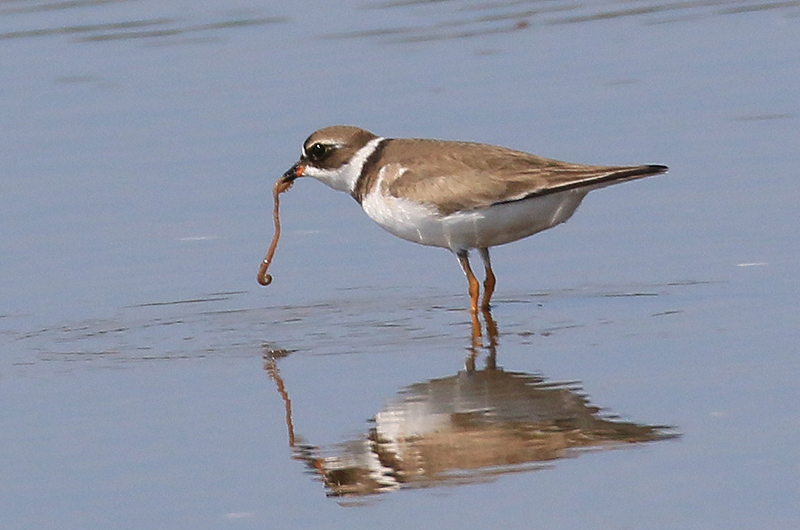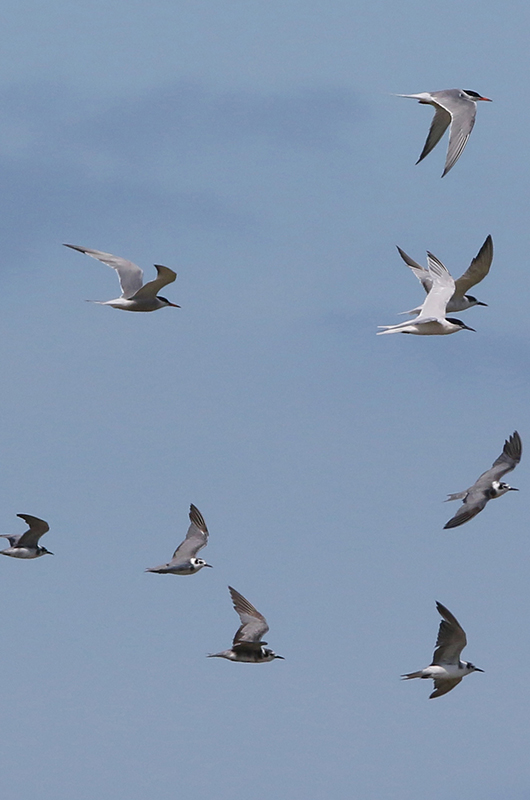One of my favorite birds is the whimbrel, one of our largest sandpipers with a big down-curved beak. Back in the day, say 30 years ago or so, it was always one of the first southbound sandpipers to arrive on our shores. Like many birds, they are not as abundant nowadays, and they no longer show up in late June or early July.
Warren Woessner spotted our first whimbrel of the season on Norton Point Beach on July 17. Eastern willets are about half the size, and did not used to nest on the Vineyard back when whimbrels came earlier in July. Despite their medium size, willets are extremely vocal and pugnacious in the defense of their nest and chicks and were harassing the heck out of the whimbrel. Also that day he spotted 20 short-billed dowitchers, another sandpiper with a long but straight beak. Mr. Woessner went back three days later and found some smaller southbound sandpipers: six semipalmated plovers, six semipalmated sandpipers, one piping plover and a black skimmer. Skimmers are more common on and near Little Beach, where both Marnely Murray and Jeremy Provost saw them on July 20.
On the subject of skimmers, which are large terns, other species of terns that do not nest here are starting to show up. I saw an adult black tern in full breeding dress at Little Beach on July 19. This is one of the smaller terns, and while most terns are predominantly white, this species is predominantly black, at least in its breeding plumage.
Bird Sightings
Speaking of nesting birds, Eleanor and David Stanwood spotted a family of common eiders — two adults and eight chicks — in Woods Hole Harbor on July 21.
A much more common nesting bird is the screech owl, but it is unusual to see a family of four young screech owls all lined up on a branch. Meredith Grace had the good fortune to see this in her backyard.
Yellow-bellied sapsuckers are making appearances now. Dave Dawson saw an immature on July 15 near the eastern end of Squibnocket Pond, where he also observed a northern harrier. And Mike Tinus observed an adult male sapsucker in his Oak Bluffs yard.
Waterview Farm in Oak Bluffs is a new location for chimney swifts. John Banks saw one on July 16 and I observed one flying overhead on July 21. Whose chimney is this, the first swift I have seen there, using?
Ruby-throated hummingbirds are always fun to watch as they buzz around the feeders and flowers to drink the sugar-laden nectar. This past week they have been reported by Lisa Kaufman Lane, Jeanne Jonis, Sharon Simonin, Nina Lisa Maria and Samantha Hartley,
Kathleen Kinsman spotted an eastern phoebe on July 21. These are the flycatchers that are most likely to nest and raise a family on or near your house. The other very conspicuous flycatcher is the great crested variety, which is a common nester in our woodlands.
As the vocal period of whippoorwills winds down, it looks like they are best heard in many locations within the state forest. David Christiensen reports he has been hearing them near the Youth Hostel. Other locales for them this season have been Chappaquiddick, Katama, near Wintucket Cove of Edgartown Great Pond, Moshup Trail and near Lobsterville.
Rick Karney spotted a mockingbird in the grassy area next to Tisbury Marketplace. I heard several singing in various locales around Oak Bluffs before that heat wave.
Finally, Jill Gambon was surprised to spot a red-tailed hawk eating a skunk. They will do this occasionally, and my guess is that they focus on the smaller youngsters that are not as aware of the dangers around them. Great horned owls, the nocturnal ecological sibling of red-tails, are better known for this habit.
The nesting season is winding down and southward migrating shorebirds are starting to show up. Please report your sightings to birds@mvgazette.com.
Robert Culbert is an ecological consultant with Nature Watch LLC living in Vineyard Haven.








Comments
Comment policy »